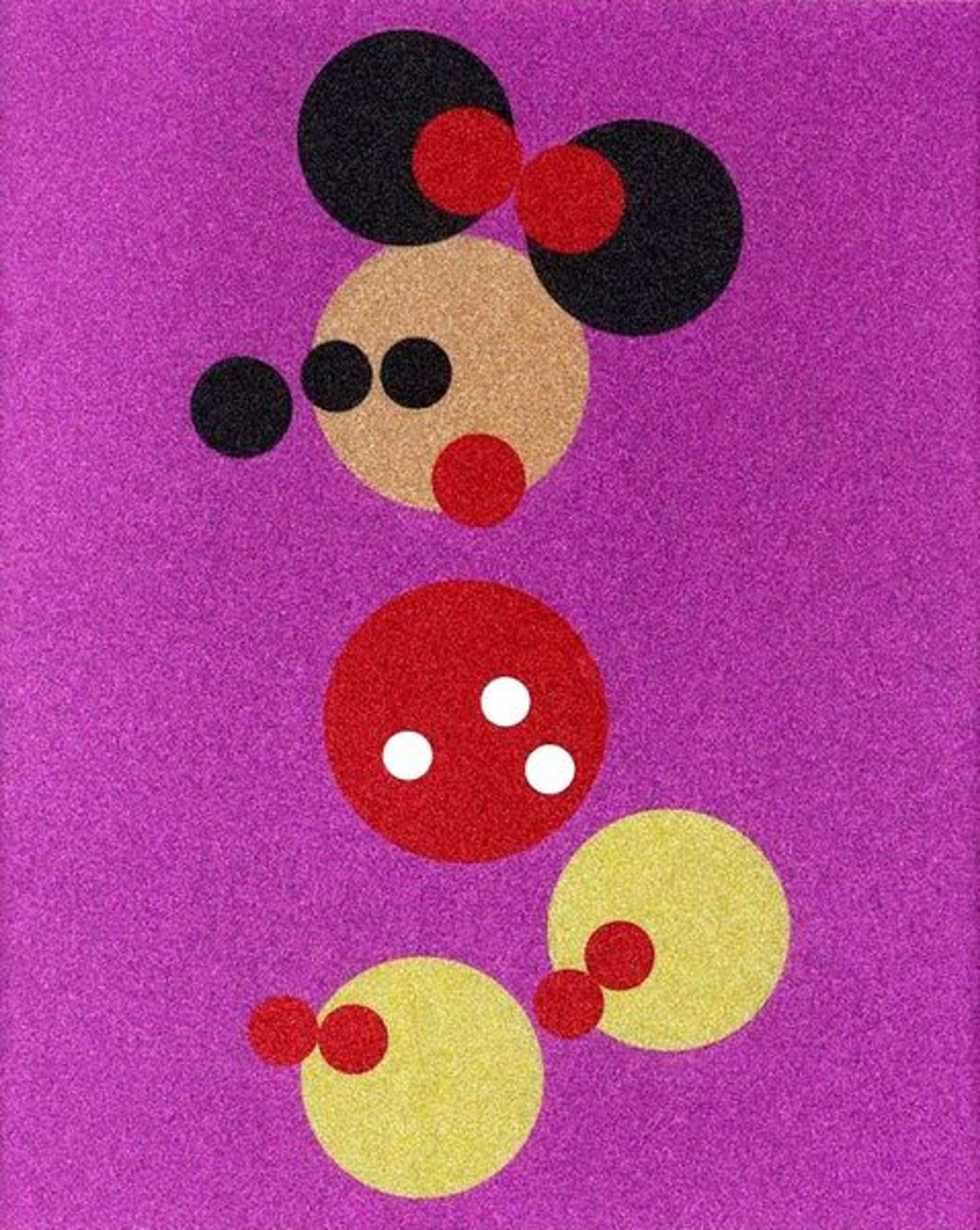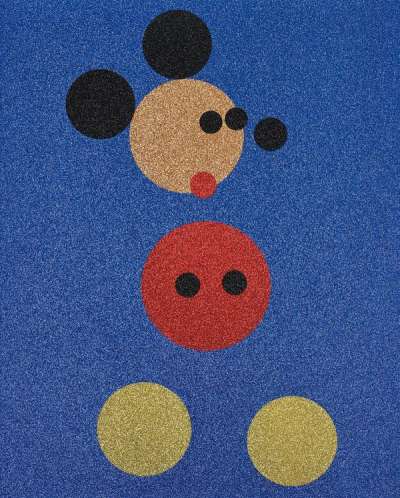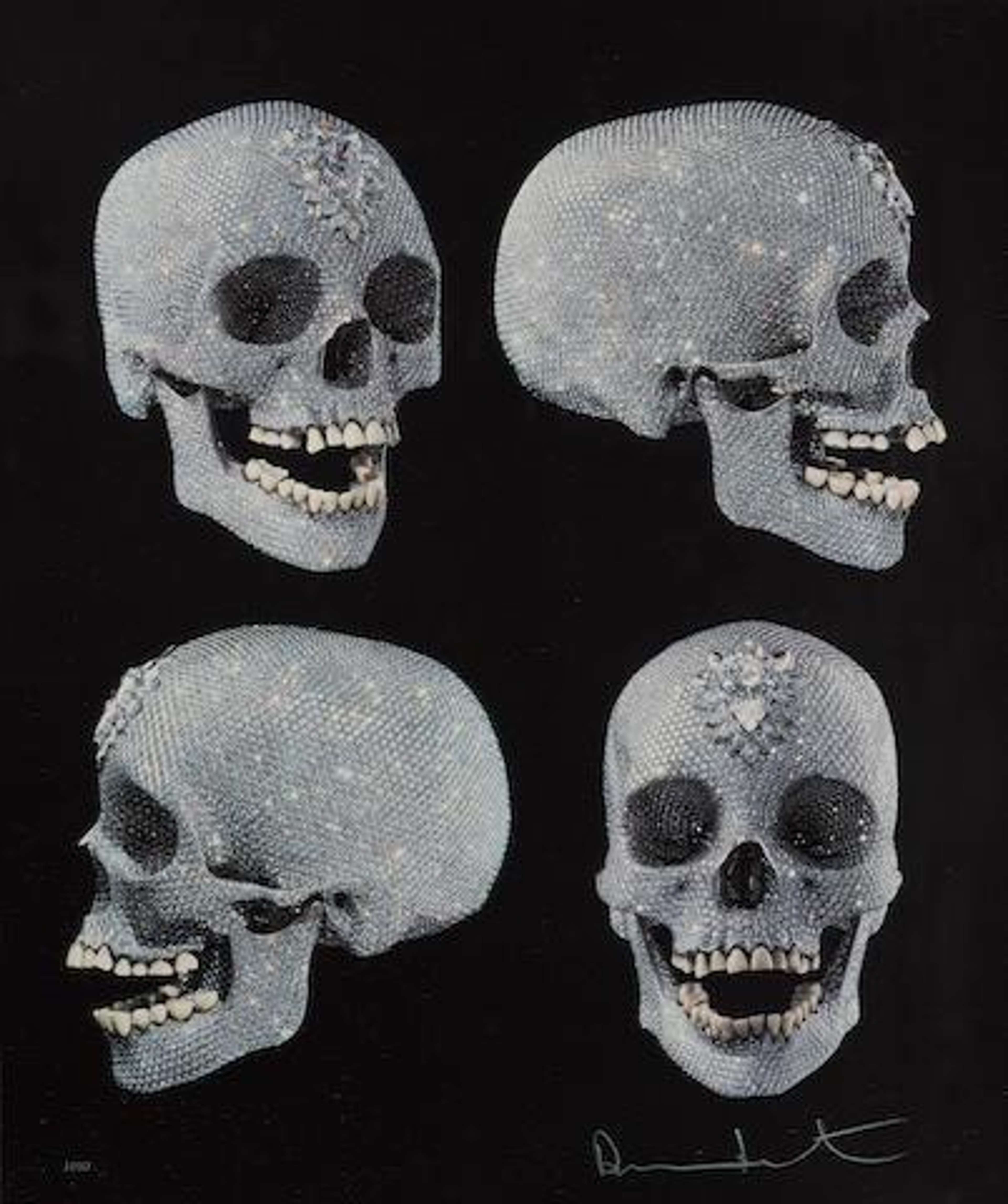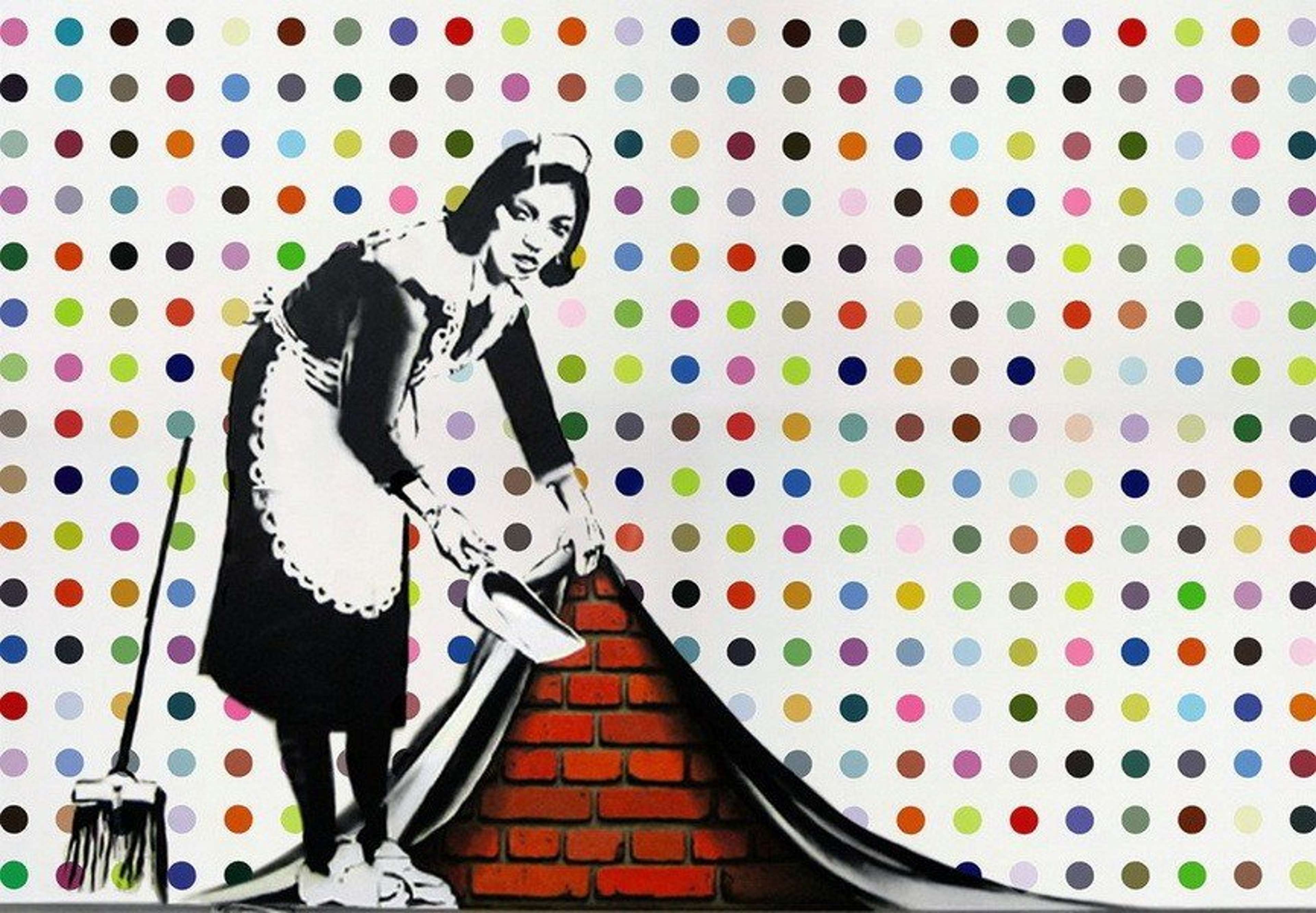 Mickey (blue glitter) © Damien Hirst, 2016
Mickey (blue glitter) © Damien Hirst, 2016
Damien Hirst
673 works
Damien Hirst's playful reimagining of Mickey Mouse is an uncharacteristically joyful instance in his oeuvre. Commissioned by Disney, the series sees Hirst reduce the iconic cartoon to 12 coloured spots.
The series was commissioned by Disney
 Mickey Mouse © Damien Hirst, 2016
Mickey Mouse © Damien Hirst, 2016Hirst's Mickey Mouse series was created after Disney invited the poster boy of the YBAs to create his own spin on their most iconic character. Hirst playfully reinterpreted Mickey using 12 spots, an integral motif in Hirst's oeuvre.
Hirst recreated the figure of Mickey Mouse with his iconic Spots.
 3-Methylthymidine © Damien Hirst 2014
3-Methylthymidine © Damien Hirst 2014When we think of the name Disney, Mickey Mouse immediately springs to mind. Likewise, the name Damien Hirst is almost synonymous with his iconic Spot paintings. Unlike the simple grid-like patterns of his Spots paintings, Hirst used spots in his Mickey Mouse series to delineate the legendary cartoon character.
Hirst was drawn to Mickey Mouse as a timeless and globally recognisably character.
 Mickey (blue glitter) © Damien Hirst, 2016
Mickey (blue glitter) © Damien Hirst, 2016For Hirst, the magic of Mickey Mouse lies in his timeless appeal. Hirst remarked in interviews that his own children watch and enjoy the Disney character just as he did as a boy. As Hirst reflected, “the thing about Mickey is that even though he’s gone through so many shifts in form and association, he’s timeless.”
Hirst sold one of his Mickey Mouse paintings for charity.
 Beautiful Mickey © Damien Hirst, 2012
Beautiful Mickey © Damien Hirst, 2012This particular Mickey Mouse work was sold at Christie's in 2014 to raise money for Kids Company, a charity founded to aid inner city children. The work combined Hirst's fascination with the Mickey Mouse character and his distinctive spin painting style, conveying the joys of childhood.
The series reveals the clear influence of Pop Art.
 Mickey Mouse (F. & S. II.265) © Andy Warhol, 1981
Mickey Mouse (F. & S. II.265) © Andy Warhol, 1981In his occupation with Walt Disney's quintessential character, Hirst follows a lineage of Pop Artists fascinated by the cartoon character. From Andy Warhol to Roy Lichtenstein to Keith Haring, Pop Art had a particular obsession with Disney. Mickey Mouse emerged in their screen-prints as a mascot of pop culture, mingling 'high' and 'low' culture.
Hirst was not the first artist to be inspired by Disney's Mickey Mouse.
 Napalm (Serpentine edition) © Banksy, 2006
Napalm (Serpentine edition) © Banksy, 2006Mickey Mouse has inspired an array of artists since he was first animated in 1928. The cartoon character informed Roy Lichtenstein's first Pop Art work, Look Mickey, and has since become an avatar of commercial culture and its many pitfalls. Mickey Mouse forms an integral part of Banksy's Napalm, which represents the cartoon as a harbinger of violence and turmoil.
The series brings naive joy into the realm of 'high art'.
 Minnie (pink glitter) © Damien Hirst, 2016
Minnie (pink glitter) © Damien Hirst, 2016The universal appeal of Mickey Mouse is owed, in part, to his simple and timeless design which has entertained children for decades. As Hirst said, "The way children are entertained today has obviously changed dramatically, but kids are still kids, and love the same things". Through his Mickey Mouse series, Hirst encourages his viewers to return to this naive way of looking.
The series proves the power of images
 H9-6 Honour © Damien Hirst, 2021
H9-6 Honour © Damien Hirst, 2021Using his iconic spots to delineate Mickey Mouse's figure, the series is testament to the power of representation. By using only a 12 spots, Hirst depicted the instantly recognisable figure of Mickey Mouse, just as he used spots to delineate cherry blossom trees in his H9 The Virtues series. As Hirst himself remarked, “I love that the imagery is so powerful that it only takes twelve different coloured dots to create something so instantly recognisable.”
Mickey Mouse has become a caricature of modern pop culture.
 Andy Mouse 4 © Keith Haring, 1986
Andy Mouse 4 © Keith Haring, 1986Hirst followed a long lineage of artist's fascinated with Mickey Mouse not only as a children's cartoon character, but also a symbol of pop culture. Just as Keith Haring's Andy Mouse series testified, Mickey Mouse has become synonymous with commercial culture and modern capitalism.
Hirst's Mickey Mouse works are uncharacteristically playful.
 Till Death Do Us Part (heavenly peppermint green, silver gloss, racing green) © Damien Hirst, 2012
Till Death Do Us Part (heavenly peppermint green, silver gloss, racing green) © Damien Hirst, 2012The oeuvre of Hirst is characterised by his near obsession with death. From glittering diamond-encrusted human skulls to formaldehyde animal corpses, Hirst's work is hardly PG friendly. However, his Mickey Mouse series takes an uncharacteristically innocent and joyful tone, encouraging a naive excitement in viewers young and old.


























